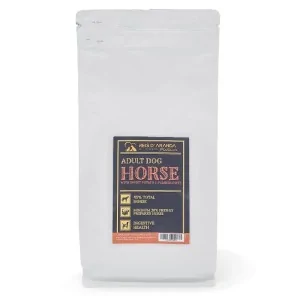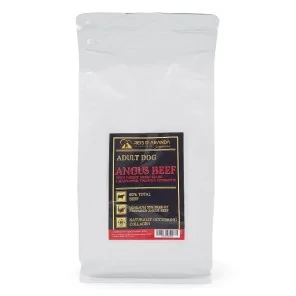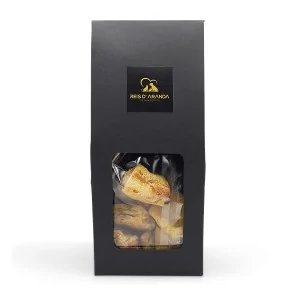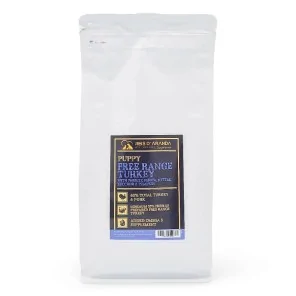The Tornjak originated from genetically homogeneous, almost extinct, indigenous shepherd dogs. These dogs have...
THE PRESA CANARIO
INTRODUCTION
The Presa Canario is a breed of large, powerful and hardy Spanish Presa Canario, originally from the Canary Islands. The Canarian Presa Canario is considered, according to a law of the Government of the Canary Islands, the natural symbol of the island of Gran Canaria, together with the cardon. The traditional function is to handle rough or semi-rough cattle, as well as to guard livestock against any type of predator. It is also often used as a pointing dog to restrain big game.
THE ORIGIN OF THE PRESA CANARIO
A few years after the conquest of the Canary Archipelago, reference is made in the Cedularios of the Government of the Canary Islands to its agreement of 5th February 1526, in which, in view of the damage caused by the dogs to large and small livestock, the extermination of the dogs was ordered, with the exception of the pair that were admitted to the butchers for their service, and this action was entrusted to Don Pedro Fernández de Lugo, who owned two Presa dogs trained to kill animals.
Throughout the 16th and 17th centuries, there are numerous allusions to and quotations about the Canary Islands' dogs of prey in the rich historical documentation following the Conquest, especially in the Cedularios de los Cabildos, and although at no time is there a description of the biotype of these dogs, there is an explanation of the function they perform. The missions of the Presa de Presa dogs are essentially guarding and fighting with the cattle; their service to the butchers is frequently mentioned, to subdue the cattle or, in the case of the Presa de Presa, to tie up the cattle.
Its function determines, therefore, a robust morphology, typical of a molosser of prey, but with agility and drive.
The Canary Islands, given their strategic geographical location in the Atlantic, have always been the obligatory stop, the hospital refuelling point on the American route. For this reason, the various Hispanic breeds that populated the New Continent, essentially hunting, tracking and prey breeds, which Spain generously had at its disposal, have always arrived on the islands.
Specifically, the Spanish presa breed, the Spanish presa, in its varieties of heavy molosser or dogo and light molosser or alano, so widely used in the conquest of America, contributed blood currents to the existing presa dog in the Canary Islands.
Throughout the 18th century, the presence of English settlers became increasingly frequent in the archipelago, usually merchants who lived temporarily or permanently in the Canary Islands.
The British character and their sporting traditions related to the dog as a fighter, of which they were so fond, arrived on the Islands. For the fights they normally used their typical gladiator dogs, such as bulldogs and bullterriers, which they brought from their country.
This English fondness for dog fighting is fully identified with the islander character, with its combative nature, an aptitude that is repeated in the Balearic archipelago with its Ca de Bou or Mallorcan dog of prey, or in Japan with the Tosa Inu as the national fighting dog.
Therefore, there are certain morphological modifications in the prey population of the islands. The idea is not only to have a prey dog that is able to perform well as a guard dog or as a cattle dog, but also to have a good fighting disposition.
Independently of this situation, we have to consider the existence in the Canary Islands of the bardino or majorero, native to the island of Fuerteventura and very widespread throughout the archipelago. This fighting dog, especially dedicated to the handling of goats and an excellent guardian, combines these conditions with great physical resistance, sobriety, low barking and an extraordinary dentition at the service of an unbribable courage. The bardino or majorero was introduced, due to its excellent breeding conditions, in the crosses which gave rise to the Presa type which arose as a consequence of the English influence. Its genetic current determines in the Presa Canario a great part of its typical expression, its characteristic greenish brindle coat, which is why it is popularly known as verdino, its rustic coat and its good disposition to fight with livestock.
As the present century progressed, the love of fighting was on the increase. They fought freely and stables were established where the horses were gathered and selected for their best fighting conditions, not for their racial characteristics. This situation determined the selection of the Presa Canario, from a purely functional point of view. That is to say, it always constituted an ethnic grouping with magnificent conditions that developed in the Islands from very ancient times, but there was never an attempt to establish a phenotype that would give us its true identity.
Once the prohibition of fighting in Spain was decreed, the Presa Canario began to decline, a situation which aggravated the invasion of foreign breeds in the Islands, until it reached a stage of near extinction around 1960.
It was from 1970 onwards that the Presa Canario began to recover. Its resurgence is slow but uninterrupted. The interest in the Presa Canario, as part of the native heritage of the Canary Islands, is widespread, although the selection and improvement programme that is essential to obtain the genetic fixity that perpetuates the breed has not yet been considered.
WHAT IS THE PRESA CANARIO LIKE?
GENERAL APPEARANCE: Molosser of medium size, straight profile and black mask. Robust and well proportioned.
IMPORTANT PROPORTIONS: The body is longer than the height at the withers. This characteristic is more accentuated in bitches. The proportion of skull to forechest is 60-40 %. The width of the skull is 3/5 of the total length of the head. The distance from the elbow to the ground should be 50% of the height at the withers in males and slightly less in females.
HEAD: Massive, brachycephalic and compact in appearance covered with thick skin. Its shape tends towards a slightly elongated cube. The skull-facial lines are parallel or slightly convergent.
CRANIAL REGION:
SKULL: Somewhat convex in anteroposterior and transverse direction. The frontal bone tends to be flat. Width almost identical to length. Pronounced zygomatic arches with well developed but not prominent cheek and jaw muscles, covered with loose skin. Occipital protuberance only slightly marked.
STOP: The stop is pronounced but not abrupt. The crease between the frontal lobes is well defined and approximately two thirds of the size of the skull.
FACIAL REGION:
TRUFA: Broad, strongly pigmented black. In line with muzzle. Nostrils large to facilitate breathing.
HOCOCO: Shorter than the skull, usually about 40% of the total length of the head. The width is 2/3 of the width of the skull. The base is very broad, tapering slightly towards the nose. Nasal bridge of nose flat and straight without grooves.
BELPHOS: The upper lip is pendulous but not excessively so. Seen from the front, the upper and lower lips meet in an inverted V shape. The lips are slightly divergent. The inside of the lips is dark in colour.
TEETH : Scissor bite or slightly prognathic bite, max. 2 mm. The canines are set wide apart. Teeth are broad with strong set on base. Large molars, small incisors and well developed canines. The absence of the premolars (P1) is not a penalty, as the prey mission is carried out by the incisors and canines, which must be well aligned and arranged.
EYES: Slightly oval, of medium size. Set wide apart but never sunken or protruding. Eyelids black and tightly fitting, never drooping. Colour varies from dark to medium brown depending on coat colour. Should never be light.
EARS: Medium size, set well apart with short fine hair. They fall naturally on either side of the head. When folded they are rose-shaped. Set on slightly above the level of the eyes. Ears set too high or too close together are considered unusual. In countries where cropping is permitted they should be erect.
NECK: Shorter than the length of the head. Loose skin underneath, forming a slight dewlap. Solid and straight, tending to be cylindrical and muscular. Average length: between 18 and 20 cm.
BODY: Long, broad and deep. Its length normally exceeds the height at the withers by 18 to 20 per cent.
UPPER LINE: Straight, without deformation, supported by well developed but not very visible muscles. Rising slightly from withers to croup. Apparent saddle on the back, just behind the withers. Height at the croup is 1.5 cm greater than the height at the withers.
Croup: Medium length, broad and rounded. Should not be long as this would restrict movement. Bitches are normally broader.
CHEST: Of large capacity and well defined pectoral muscles. Seen from the front as well as from the side, it should be well let down, at least to the level of the elbows. The thoracic perimeter is generally equal to the height at the withers plus 30% of the height at the withers, although it is desirable to exceed this proportion. Ribs well sprung.
BOTTOM LINE AND BELLY : Slightly tucked up and never let down. Flanks only slightly pronounced.
TAIL: Thick at the base tapering towards the tip, reaching no higher than the height of the hock. Set on high. In movement it is carried sabre-shaped but not curved or resting on the back. At rest it hangs straight with a slight curve towards the end.
LIMBS
FOREQUARTERS:
Shoulders: Well laid back.
ARMS: Well angulated, oblique.
FOREARMS: Well balanced, straight. Bones strong and well muscled.
ELBOWS: Should not be close to the ribcage nor open outwards.
Pasterns: Very solid and slightly sloping.
HANDS: Cat foot with rounded toes, not too close together. The pads of the feet are well developed and black. The nails are dark. White nails should be avoided but may be in accordance with coat colour.
HIND LIMBS:
GENERAL APPEARANCE: Seen from behind strong and parallel with no deviations.
Upper thighs: Long and very muscular.
KNEE: The angulation is not too pronounced but must not be insufficient.
METATARS: Always well let down.
FEET: Slightly longer than the fore feet and of similar characteristics.
GAIT / MOVEMENT: In movement, the Presa Canario is agile and elastic, covering the ground well. Long stride. The tail is carried low and the head only slightly raised above the level of the back. When alert, tail and head are carried high.
SKIN: Thick and elastic. Looser on and around the neck. When alert the skin over the head forms symmetrical folds forming from the crease between the frontal lobes.
COAT: Short, rough, smooth without undercoat (may appear on neck and back of thigh). Rather coarse to the touch. Very short and fine over the ears, slightly longer over the withers and on the back of the thighs.
COLOUR: All shades of fawn to sand. All shades of brindle to brindle with sandy base. Black. White markings on chest, around neck or throat, front and hind feet are acceptable but should be kept to a minimum. The mask is always black (in fawn and brindle) and must not extend above eye level.
SIZE AND WEIGHT:
HEIGHT AT WITHERS:
- MALES: 61 to 66 cm.
- FEMALES: 57 to 62 cm.
WEIGHT:
- MALES: 45 to 57 Kg.
- FEMALES: 40 to 50 Kg.
FAULTS: Any departure from the foregoing points should be considered a fault and the seriousness with which the fault should be regarded should be in exact proportion to its degree and its effect upon the health and welfare of the dog.
SLIGHT FAULTS:
- Pincer bite.
- Excessive wrinkling of the skull and facial region.
- Presence of dewclaw.
SEVERE FAULTS:
- Any fault is considered severe when it affects the expression and limits the typicality of the dog.
- Slightly underweight specimens.
- Incorrect proportions of the head.
- Extremely convergent skull-facial lines (stop too pronounced).
- Loin and withers at the same height.
- Incorrect position of the limbs.
- Square profile.
- Head triangular, narrow (not cube-shaped).
- Thin, curled tail. Low set.
- Back excessively sunken or tucked up.
- Eyes light (yellow), close set or oblique, sunken or protruding.
- Excessively prognathic bite.
- Insufficient mask.
- Nose with depigmented areas.
- Excessively pendulous belfos.
- Absence of teeth except P1.
DISQUALIFYING FAULTS:
- Aggressiveness or extreme shyness.
- Any dog showing clear signs of physical or behavioural abnormalities.
- Nose totally unpigmented.
- White markings not accepted.
- White markings over an area of more than 20 per cent. - Enognathic bite.
- Croup lower than withers.
- Sloping topline.
- Blue or different coloured eyes.
- Docked tail.
N.B.:
- Males should have two apparently normal appearing testicles fully descended into the scrotum.
- Only functionally and clinically healthy dogs of typical breed conformation should be used for breeding.
HEALTH OF THE PRESA CANARIO
The Presa Canario has a history of pathology which closely approximates that of other large breeds of dogs.
In this respect, this dog will suffer from joint diseases such as hip and elbow dysplasias, will face neural complications such as epilepsy and may suffer from digestive problems such as gastric torsion. Regular check-ups with your vet are essential to avoid these problems.
Taking all diseases into account, the Presa Canario has a life expectancy of around ten years.
THE PRESA CANARIO'S PERSONALITY
As with most large dogs, the Presa Canario's attitude is very calm. However, he shows this calmness with familiar people with whom he feels at ease, with strangers he tends to behave defensively!
He is a very obedient dog and it is very easy to teach him different behavioural patterns. Family loyalty is something he carries in his DNA and it is not common to see him aggressive towards other dogs.
Although it is a fast learner, the Presa Canario is not a dog suitable for beginner owners, as, in the wrong hands, the Presa Canario can become a dangerous animal.
If there is one thing that makes this breed stand out, it is its relentless ability to be a watchdog.
CONCLUSION
The Presa Canario, also called Perro de Presa Canario, comes from the Canary Islands and is a particularly versatile dog. It is strong and athletic, intelligent and very protective of its own. Reserved in front of strangers because of his history as a guard dog, he is an obedient, noble and loyal dog, a quick learner and very fond of pleasing his owner.
Leave a comment
Log in to post comments
















